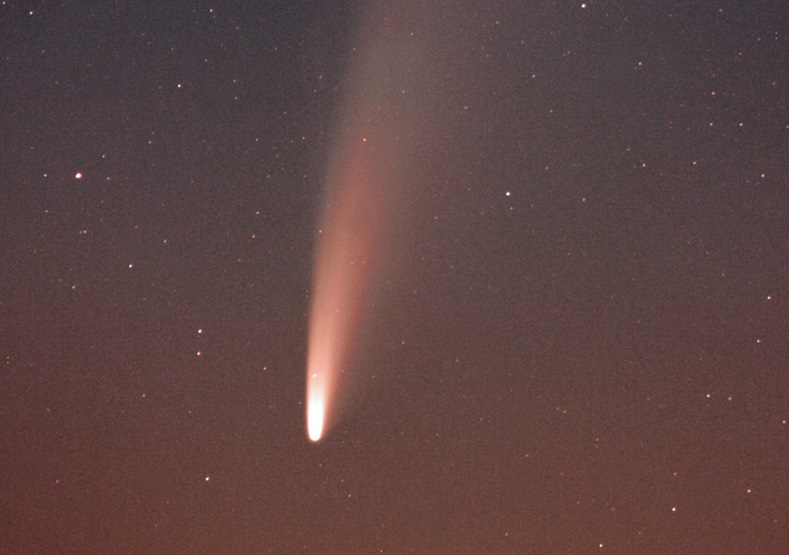

Rosetta detected building blocks of life on this comet, too. Rosetta dropped a lander on the nucleus, then orbited the comet for two years. Rosetta, a mission of the European Space Agency that had several NASA instruments onboard, studied Comet 67P Churyumov-Gerasimenko. Each probe will be about 0.5 meters in diameter. Astronomers using the Hubble Space Telescope spotted Comet C/2014 UN271, which has a solid nucleus that reaches 85 miles across. Comet Interceptor potrà cacciare le comete. Una nuova sonda ESA sta per essere lanciata nello spazio. Scientists found those particles to be rich in hydrocarbons, which are chemicals we consider the “building blocks” of life. Comet Interceptor will carry two small probes, including one built by the Japanese space agency, JAXA. L’Agenzia Spaziale Europea ha approvato lo scorso 8 giugno la data ufficiale del lancio di Comet Interceptor, ovvero della loro sonda caccia comete. NASA’s Stardust mission collected samples from Comet Wild 2 (prounounced like “Vilt two”) and brought them back to Earth. In recent years, though, several spacecraft have had the chance to study comets up close. When do astronomers expect the next comet that will be visible during daylight A naked-eye, daytime comet is tough to predict with any degree of certainty pretty much until someone actually manages to see the comet in the daytime with the naked eye - and even then, its not likely to remain a naked-eye, daytime comet for very long. McNaught who has discovered more than 50 comets.

Next comet full#
But it wasn't possible to get a good view of a comet nucleus from Earth since it is shrouded by the gas and dust of the coma. From comet West, fast forward a full 31 years to 2007 and the next truly great comet (sidestepping Hale-Bopp). People have been interested in comets for thousands of years.
Next comet tv#
Get the latest updates on NASA missions, watch NASA TV live, and learn about our quest to reveal the unknown and benefit all humankind. Comet Leonard will be hidden by the brilliant solar glare during this time, rapidly receding from both the sun and Earth after Jan. The ion tail (blue) always points directly away from the Sun, while the dust tail (yellow) points away from the Sun in a slightly different direction than the ion tail. brings you the latest images, videos and news from America's space agency. Next day, on July 29, Comet Halley will pass closest to Earth. Both tails are always directed away from the Sun. after our current comet show, Comets and Discovery. While you’re out there looking, you might also notice Saturn and Jupiter in nearly a straight line above Venus.A comet has two tails that get longer the closer it gets to the Sun. The comet will be a few degrees to the south, or left, of Venus. Keep your eye on that planet and you’ll know where to look for comet Leonard as it gets darker. Scientists are forming a clearer picture of the comet Bernardinelli-Bernstein (C/2014 UN271) as it slingshots back towards the center of. Venus is so bright that it’s usually the first night sky object you can detect at dusk. The largest comet ever recorded has Earth in its sights. For the next week, it will appear right next to Venus, the brightest thing in the night sky other than the moon, about 45 minutes after sunset, just above the southwestern horizon. Though it may not be visible with the naked eye, Leonard won’t be hard to find and you won’t have to get up in the middle of the night to see it.

“There’s a chance it could be bright enough to see with the unaided eye, but again, with comets, you really never know.”Ī comet’s brightness depends on how much sun-reflecting ice and gas it gives off at any given time. “Comet Leonard is predicted to peak at a brightness that will probably require binoculars to spot it,” it stated. Cometary nuclei originate in either the Oort cloud (long-period comets) or the Kuiper Belt (short-period comets) and have been perturbed into plunging orbits by gravitational influences. The dust and gases form a tail that stretches away from the Sun for millions of. A comet is small astronomical body which orbits the Sun on a very eccentric orbit, and which exhibits a coma, a large hydrogen cloud and highly visible tails during its perihelion passage. When a comet's orbit brings it close to the Sun, it heats up and spews dust and gases into a giant glowing head larger than most planets. When frozen, they are the size of a small town. In its monthly “What’s Up” online observation guide, NASA said comets are notoriously difficult to predict in terms of brightness and visibility. Comets are cosmic snowballs of frozen gases, rock, and dust that orbit the Sun. Comet 46P/Wirtanen is a small Jupiter-family comet that has been considered as a potential spacecraft target.


 0 kommentar(er)
0 kommentar(er)
